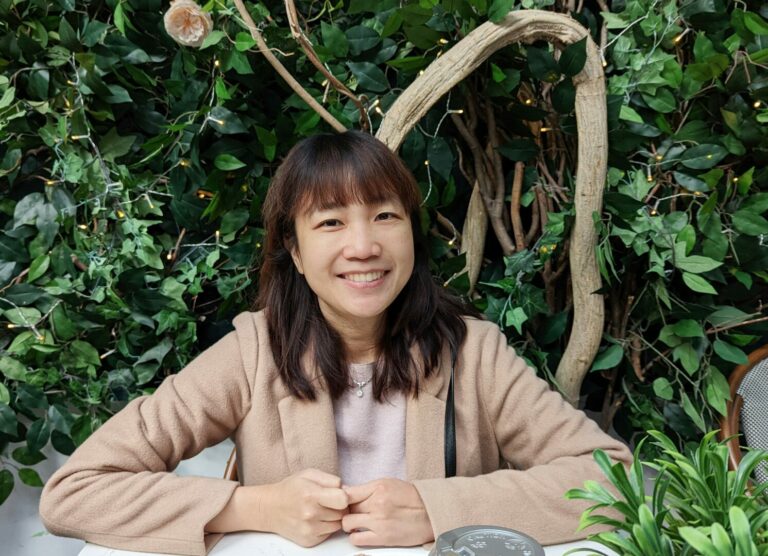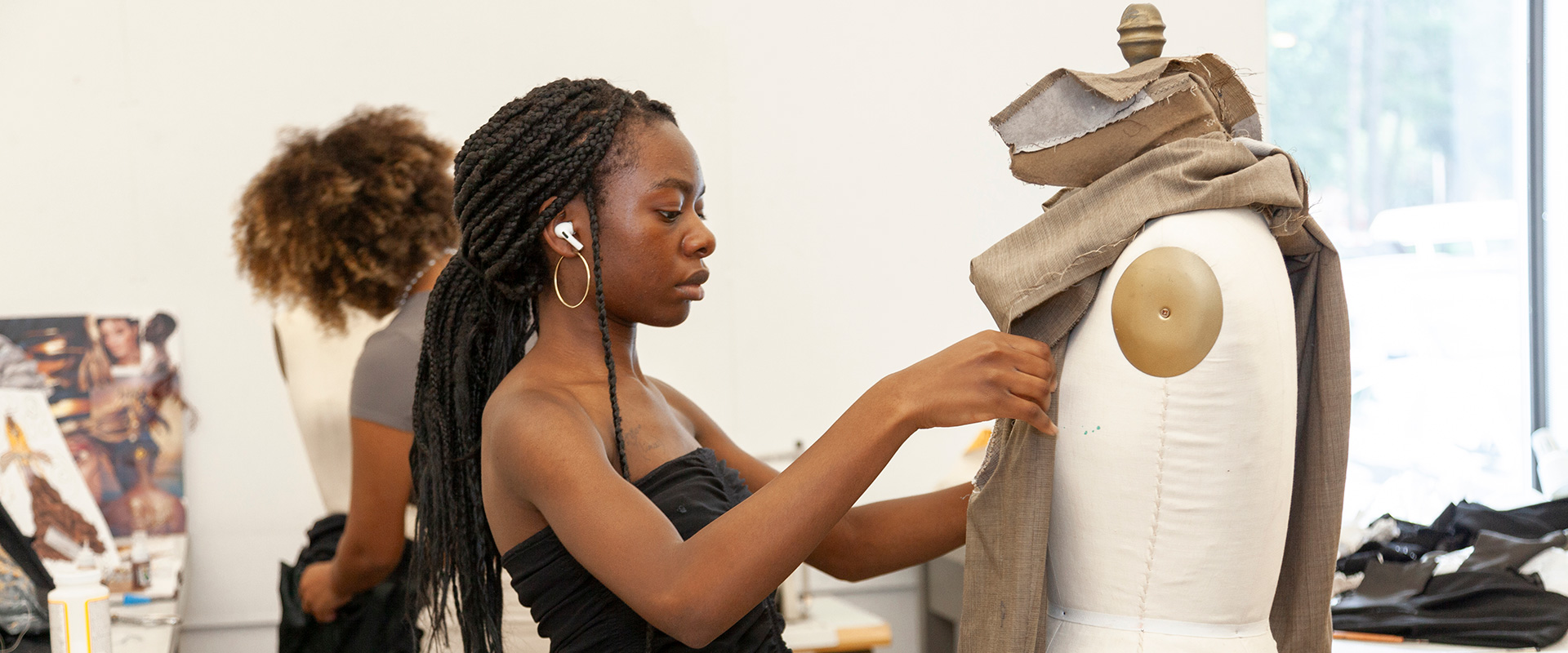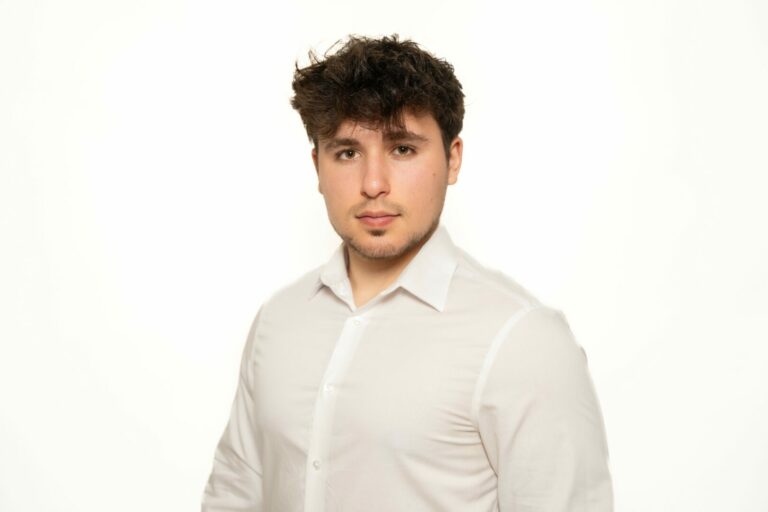Alright – so today we’ve got the honor of introducing you to Ashley Cluskey-Gallagher. We think you’ll enjoy our conversation, we’ve shared it below.
Ashley, sincerely appreciate your selflessness in agreeing to discuss your mental health journey and how you overcame and persisted despite the challenges. Please share with our readers how you overcame. For readers, please note this is not medical advice, we are not doctors, you should always consult professionals for advice and that this is merely one person sharing their story and experience.
Every day is a challenge when you’re battling your own brain. In the depths of my depression, my thoughts were filled with self-doubt, shaming myself for not being able to do “normal,” everyday tasks and racing thoughts of how others perceived me. When my eldest sister suddenly passed away at 31, I fell deeper into that depression, unable to remember a time when I was happy. Now, eight years later, through self-discovery, medical intervention, and radical life changes, for the first time in my life, I’m truly happy.
It took a lot of work to get where I am today. I spent 7 years trying every category of antidepressant, monitoring symptoms, and enduring an ever-changing brain chemistry. I was in survival mode, struggling to thrive, and relied heavily on a support system of friends to keep me afloat. The lows were very low and the highs were nonexistent. My husband (then boyfriend) cared for me in the ways I wasn’t able to and was extremely patient on my worst days. My type-A friend put a monthly calendar event on my phone to refill my prescriptions to make sure I stopped forgetting to pick them up and avoid withdrawal symptoms. I’d cry from frustration and impatience, failing to find the magic pill that could fix me while resenting the idea that I would depend on a pill to “be happy.” After years of prioritizing my career over everything, I was burned out and an exhausted shell of myself.
When my sister suddenly died in 2017 at the age of 31, a victim of the opioid epidemic, my entire perspective on life changed. I let go of my pride and self-importance. My career, which had been my whole world, didn’t matter as much anymore – I needed more time with the people I loved. What others thought of me was no longer my problem – it was theirs. I prioritized what I needed and wanted because my depression and anxiety were now compounded by soul-crushing grief, regret, anger, and guilt. I was unmoored. I drank and partied, trying to make my own joy or wallow in my misery, depending on the day. I was feeling all my feelings, deeply and thoroughly – something I had never taken the time to do in the past. I needed to sit with those feelings for a long time before I could accept them and they could dissipate.
“In the dark, I realized this life is short.” Lyrics like this from Kesha’s Rainbow album became my lifeline, playing as a daily meditation. To keep my hands busy and my mindset positive I learned calligraphy and hand lettering, focusing on lyrics that spoke to me like, “Maybe my head’s f*cked up, but I’m falling right back in love with being alive” and “living like there’s nothing left to lose.” I had to “Learn to Let Go” of all this negative energy in my body that built up from a lifetime of anxiety and this new, deep grief. Each day, I had to choose to be happy. I had to reach for acceptance, love, joy, and peace while being dragged down by the negative energy of these feelings of grief, apathy, and guilt. It was active work. It was constant work. I looked for the beautiful and colorful things in life. I inherited my sister’s brushes and learned to appreciate makeup as she did. I dyed my hair blue based on her art. I went to concerts and danced in the rain. I clung to music and art that resonated with me as I lived life as freely as possible – because my sister couldn’t.
After my wedding in November 2018, I finally felt I had space to find a therapist. That’s when the real upward trend started. At 28, I was diagnosed with Attention-Deficit/Hyperactivity Disorder (ADHD). Turns out the situational depression, anxiety, and chronic depression that I had been treating for the last 7 years were symptoms, not the root issue. People with ADHD struggle with executive dysfunction. These are the skills used to plan, organize, and complete tasks effectively. This explained why I hadn’t seen any doctor in years and always felt behind on “adulting.” All the shame, guilt, and frustration I felt from being unable to do “normal”, everyday tasks was lifted from my shoulders. I now knew why those tasks took more mental energy and effort from me. I finally started to forgive myself for “failing at life” and let go.
I began taking medication for my ADHD. For the first time in my life I could hear my thoughts one at a time, to completion, before another thought began. I had never experienced that before. Between hearing my thoughts clearly and letting go of those negative emotions, I was able to start getting my life together: booking overdue appointments, getting organized at home, and not forgetting every commitment I made. I finally unpacked moving boxes that had been sitting around for years. I accepted that my brain worked differently and was able to put systems in place that set me up for daily success. Without the constant internal guilt trips, I felt more peaceful and able to relax. I was still crying regularly from grief, but it started to feel like waves of emotion that would pass instead of drowning me.
Although she was gone, I still felt connected to my sister. Energy can’t be destroyed, only transformed. So I kept an eye out for messages from her, reminding me of what was important. Without the negative energies of shame and guilt pulling me down, my grasping upward for love and joy started to have forward momentum. I had less patience for negative people or wasting my time on things I didn’t want to do with people whose company I didn’t enjoy. I practiced unapologetically setting boundaries to protect my peace. I remembered that I’m fabulous and a gift to the world. I made my art supplies more accessible so I could enjoy them more frequently – and it didn’t feel like work to get started on an idea or creative whim. I started decorating my home to fall in love with my space and be organized for how my brain works.
I intentionally removed myself from environments that weren’t congruent with my commitment to moving forward and living a joyful life. We moved to Philadelphia to be closer to friends and family, leaving the very hot and very insular Miami. This fresh start allowed me to see how much I had grown, which made the areas I needed to improve more apparent. I got another advertising job I loved that eventually turned into a job I hated. I continued to overcommit and be too emotionally invested in work, forgetting to make time for myself. It tested the mental fortitude I had built but also made me realize there was a mental dissonance between the environments I was working in and how I felt people should be treated. So, with the help and support of my husband, I quit and began exploring new careers.
Through it all (2020-2025), I was in cognitive behavioral therapy (CBT) and changed my medication as needed with my psychiatrist. Examining and unlearning belief systems that don’t serve you is hard work but life-changing. Spending an hour every other week to examine why you do the things you do is uncomfortable, but you start to discover layers of hurt to release. Between sessions, I was still finding music that spoke to me, allowing me to cry it out or keep building my confidence in myself. I made time for art and hobbies like community theater. I started daily journaling to practice gratitude and set intentions week after week. I didn’t notice when it happened, but I was moving forward with more ease. I stopped holding myself to expectations I wouldn’t hold others to. I cried for my sister, cried for my younger self, recognized the anger and sorrow I was holding onto, and slowly let it all go. I finally accepted that I have a disability that can be debilitating at times. Perhaps most importantly, I learned I don’t need to be productive 24/7 because rest is productive.
Overcoming mental health issues is a long and laborious journey. It requires you to be patient, in tune with your body, and self-reflective. It takes time to find doctors you click with and to figure out what works for you and what doesn’t. There is no ‘one-size-fits-all’ solution. It truly is a guess-and-check process. I found out I needed to adjust my brain chemistry before I could even get out of survival mode to start working on myself. My support system of doctors and friends kept me afloat while I was in survival mode. My friends cared for my physical well-being and kept reminding me I was safe and not to listen to the bullies in my head. They were there to lift me up when I was at my lowest and call me out when I was on a self-destructive spiral. That kind of support is life-saving.
It’s odd to think it took my sister dying for me to really start living. It forced me to let go of so much negative energy that had consumed me and embrace the joyous parts of life. Letting go released me from the downward pull of shame, fear, guilt, anger, and apathy. By choosing to live enough life for the two of us, I fell back in love with being alive. I found the high road and felt the forward momentum of positive energy of love, peace, and joy. Now, I’m on a completely different frequency.
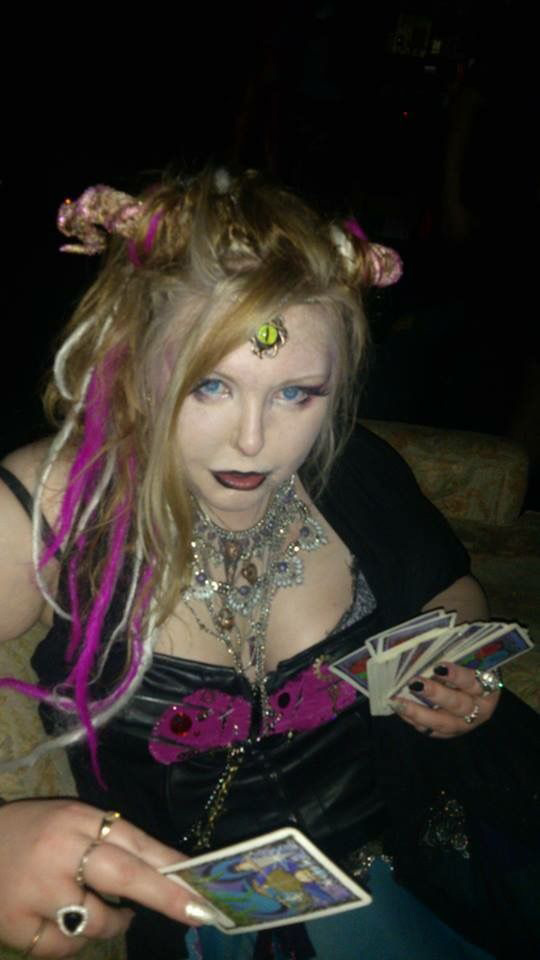
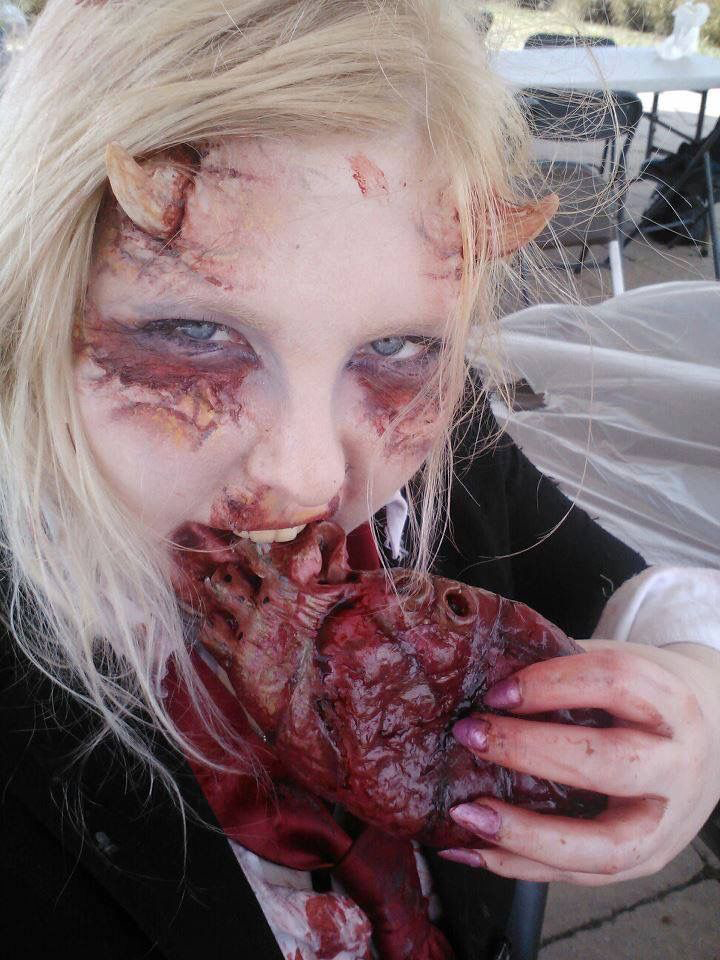
Thanks, so before we move on maybe you can share a bit more about yourself?
I’m a full-time artist and freelance designer. However, I’m still discovering what I want to say with my art and in what form. I’ve been a commercial artist for so long where I’m given a brief on what to make, it’s been a process to figure out a focus for myself. So, right now, I’m still developing my style and story as an artist.
I’m very empathetic and connect with people quickly. I believe I have a superpower to swiftly identify people’s unique talents and foster their passion in a way that gives them new energy and fulfillment. I’m a great hype man for any individual or collaborative project, knowing where to direct others to let them do their best work. It’s a great skill to have as a creative director or in a collaborative project, but it’s also powerful when working with clients on their brand identity or messaging strategy.
This also allows me to hear someone’s vision, see it clearly in my mind’s eye, and guide them in making it a reality easily. I find a lot of joy in helping others bring their creative vision to life. Even if it’s not always clear to them, I know I can take their concept, execute it, and sprinkle a little magic on top.
My current professional focus is to put beauty into the world. My husband and I joke that I exchanged one job for eight of them, and it’s not that far off. Right now, I’m working a lot of freelance floral design gigs for events and retail. This has been a great networking opportunity for my calligraphy and hand-lettering work – making bespoke elements for events. I’m a painter, accepting commissions and selling my work in my online store, ashleycg.com/store. My love of environmental design from agency life persists, so I paint murals and design vinyl wraps for the home or office. This work is so fulfilling for me – working with a client to capture a mood or feeling for a space. As a graphic designer, I create visual solutions for businesses and events across print and digital media.
When I’m not on a job, I’m practicing, honing my skills, and having fun. I play with new mediums, do observational studies, make mood boards, and generally try to get out in the world to be inspired by its beauty and people. I often look at other artists’ work and replicate it in a new medium as a study of some element of that work. It’s relaxing and really good practice.
My primary focus at the time of this interview is getting together new work for the spring/summer release on my shop, ashleycg.com/store. Besides my paintings and prints, I upcycle things like pottery and clothing to make unique pieces for the weird and wonderful. I suggest readers subscribe to my mailing list on ashleycg.com to be notified when those unique pieces become available. My site is also where readers can reach out if they need branding and design help or custom commissions.
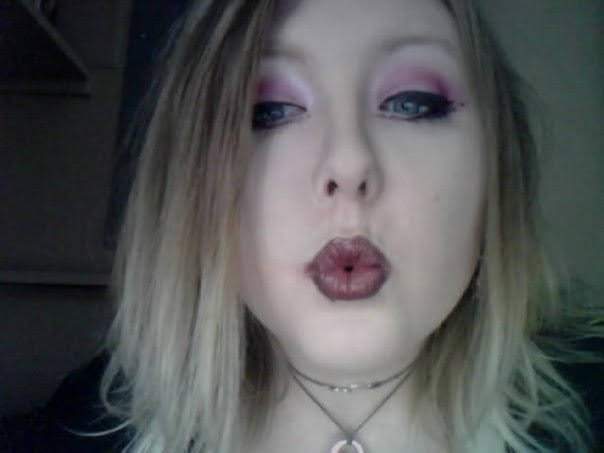
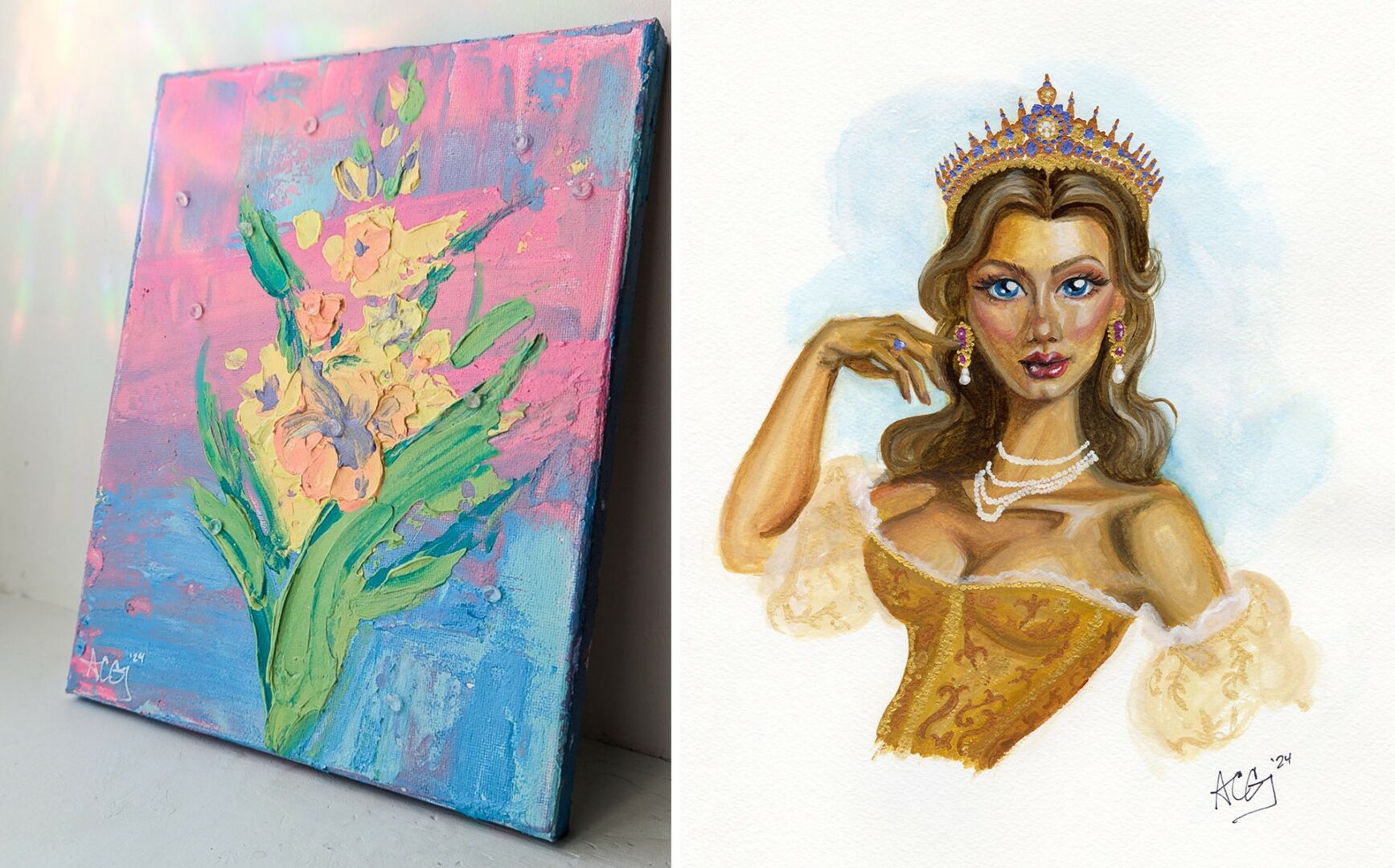
There is so much advice out there about all the different skills and qualities folks need to develop in order to succeed in today’s highly competitive environment and often it can feel overwhelming. So, if we had to break it down to just the three that matter most, which three skills or qualities would you focus on?
1) Creative work is a team sport.
When you’re younger and earlier in your career, it can feel like you have to find a way to stand out above your peers. While it’s important to figure out what you’re great at and what makes your work uniquely yours, it’s not a competition. Much of the work you’ll do in creative fields will be part of a collaborative team. When a group of creative types work towards one vision, the energy is electrifying. One person hits a creative block or starts overthinking while someone else hits their flow state and can move them out of the rut. It keeps the momentum going. Be confident in what you’re good at, but leave the ego at the door. Keep yourself open to learning from the talented people around you and embrace collaboration. With time, you’ll have a community and network of creatives who call on each other because they enjoy working together. Find your people and root for their success.
2) Listen to understand rather than listen to respond.
If you’re thinking about what you’re going to say in response to someone, you’re not listening to all of what they have to say. I rarely have revisions with my design clients because I ensure I’m 100% clear on the purpose of the project and their vision for it at every stage. If they don’t have a vision, I at least know what they do and don’t like stylistically. I listen and ask a lot of clarifying questions, especially regarding language. “Modern design” might have a different definition to you than the client. Ask them to elaborate with more features and examples of “modern design.” This also applies to everyday exchanges and can make for more interesting and fulfilling conversations.
3) Learn to fail.
Failure is a huge part of the creative process! Oftentimes, things don’t go according to plan. Reframe your thinking to “I never fail, only learn.” You didn’t lose anything, you gained knowledge. If you’re trying new mediums, art forms, or techniques, the only way you grow and get better is by failing often. You’ll make 100 terrible pieces of art before making one that’s good or great. Each time you mess up a piece or make something terrible, you learn a little more about what not to do.
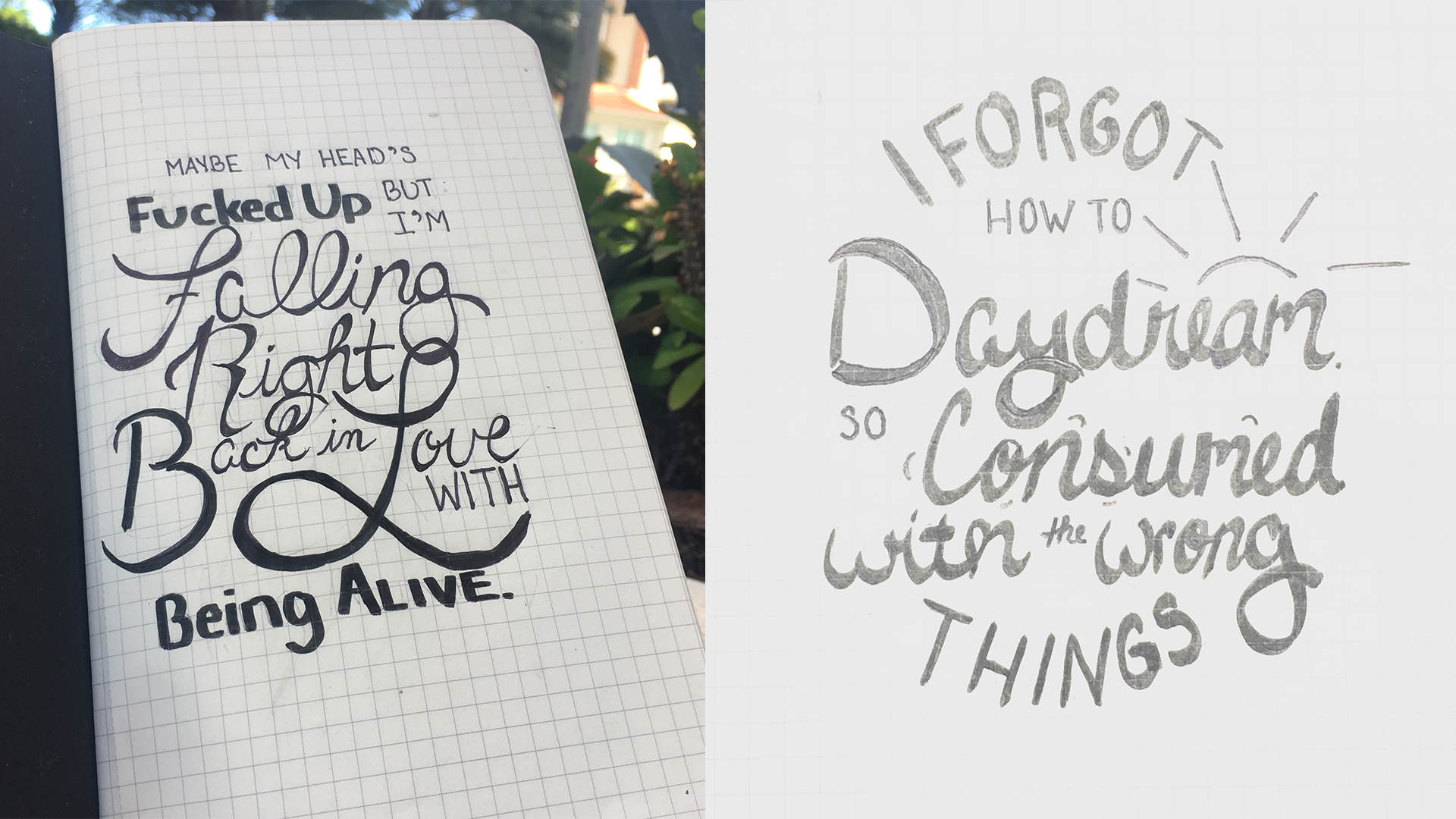
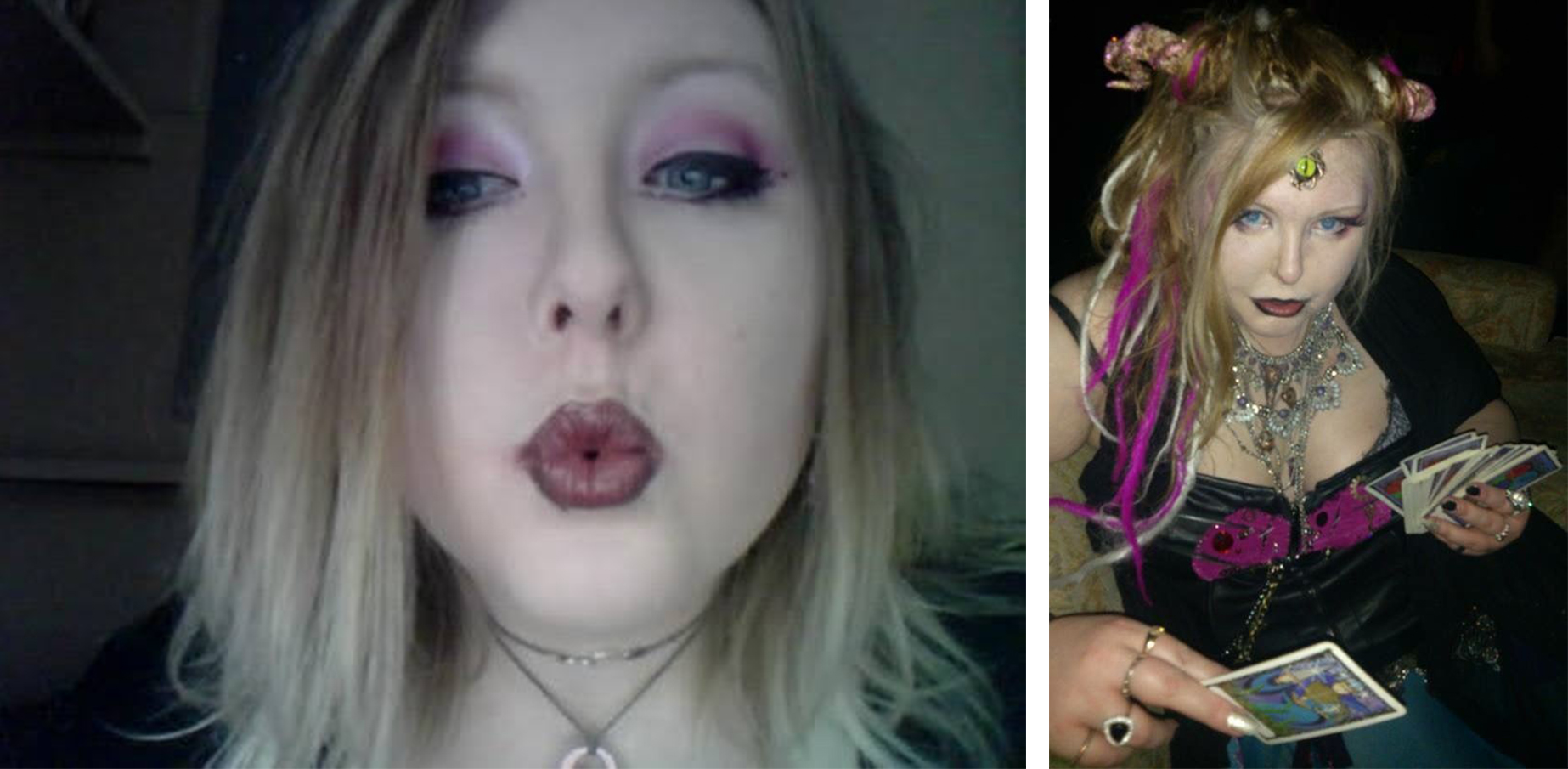
Any advice for folks feeling overwhelmed?
First, I schedule a ‘do nothing’ day in my calendar. With that event booked in, I won’t add more to my plate on that day, giving me space to sleep and do nothing. I call the event “DO NOT MAKE PLANS” in my calendar. Many times, that’s a couple of weeks in the future, so I have to make a plan to survive until then. At least I have that date to look forward to.
Then, I write out what tasks or obligations need to be completed and are causing this sense of overwhelm. When doing this I have to remind myself not to spiral and make an endless list of things I’ve put off for weeks. I focus on one week at a time, day by day when it’s too much. I start with the non-negotiables that are time restricted and map those on a calendar. I take a moment to figure out if anything needs to be done ahead of those obligations (research, packing, planning, recovering, etc) and plan what days I’ll do those tasks, adding them to the calendar. If anything on the list can be postponed or moved, I add them to the to-do list on my phone’s home screen to move them tomorrow after I’ve had a second to relax and rest. People are usually understanding about rescheduling. This gives me an action plan to follow and adds more breathing room to my schedule.
I’m honest about my energy levels as I make this plan. When writing my list of what needs to be done, I typically set no more than 1-2 goals for a day and plan to rest in the evening. I make sure there’s space to relax and decompress from any running around because things requiring executive function skills leave me absolutely exhausted.
I have the privilege of a true partner in my husband, who doesn’t constantly add to my plate. He’s always a calm sounding board to help me talk through my game plan, especially because I process my thoughts better when speaking them out loud. When I’m really underwater and he has the mental space to help, he’ll offer to do one of the tasks that’s in his skillset but is overwhelming for me. It’s a cheat code, I know, but if you can get a helping hand on even one thing, it can make a difference sometimes. A close friend or room mate might be able to support you in some way. They say “it takes a village to raise a child,” but the village is also there for the villagers’ benefit. A village protects the individual villagers and parses out tasks to do more. Find your village and cultivate your community.
I’ve found that I typically feel overwhelmed when I forget to make space to rest, relax, or take care of my living space. Resting and relaxing can be hard for creative types. When you’ve turned your hobbies and passions into your job, the thing that brought you joy might feel like work, especially if you’re burned out. There’s a pressure to constantly be productive and for each thing you create to have a purpose. That’s why I keep lots of “low-effort art” supplies around. Sometimes I just want to watch bad TV and color in a coloring book. I don’t want to think of a subject or do technical line work. I just want to blend happy colors. Painting 3D-printed figurines got me back into painting after years of avoiding it because the setup and thinking of what to paint felt like a lot of work. Bedazzle something, learn needlepoint – anything that lets you play with art without overthinking it. When you’re overwhelmed or burnt out but need a creative outlet to thrive, bring the complexity level down to where your energy level is. Start where you are.
Contact Info:
- Website: https://ashleycg.com
- Instagram: @acluskeygallagher
- Linkedin: https://www.linkedin.com/in/ashleycg/
- Other: My online store: ashleycg.com/store
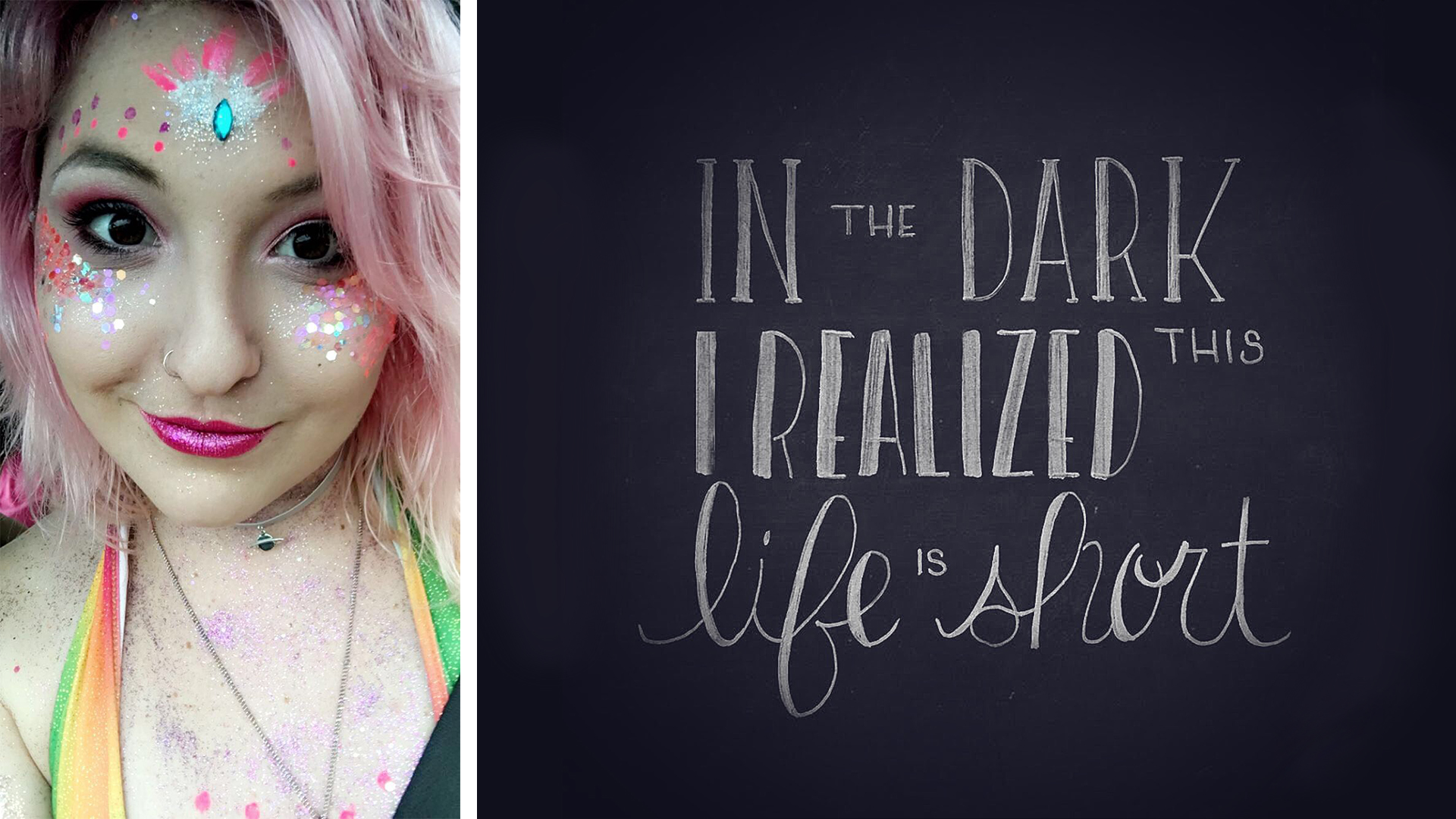
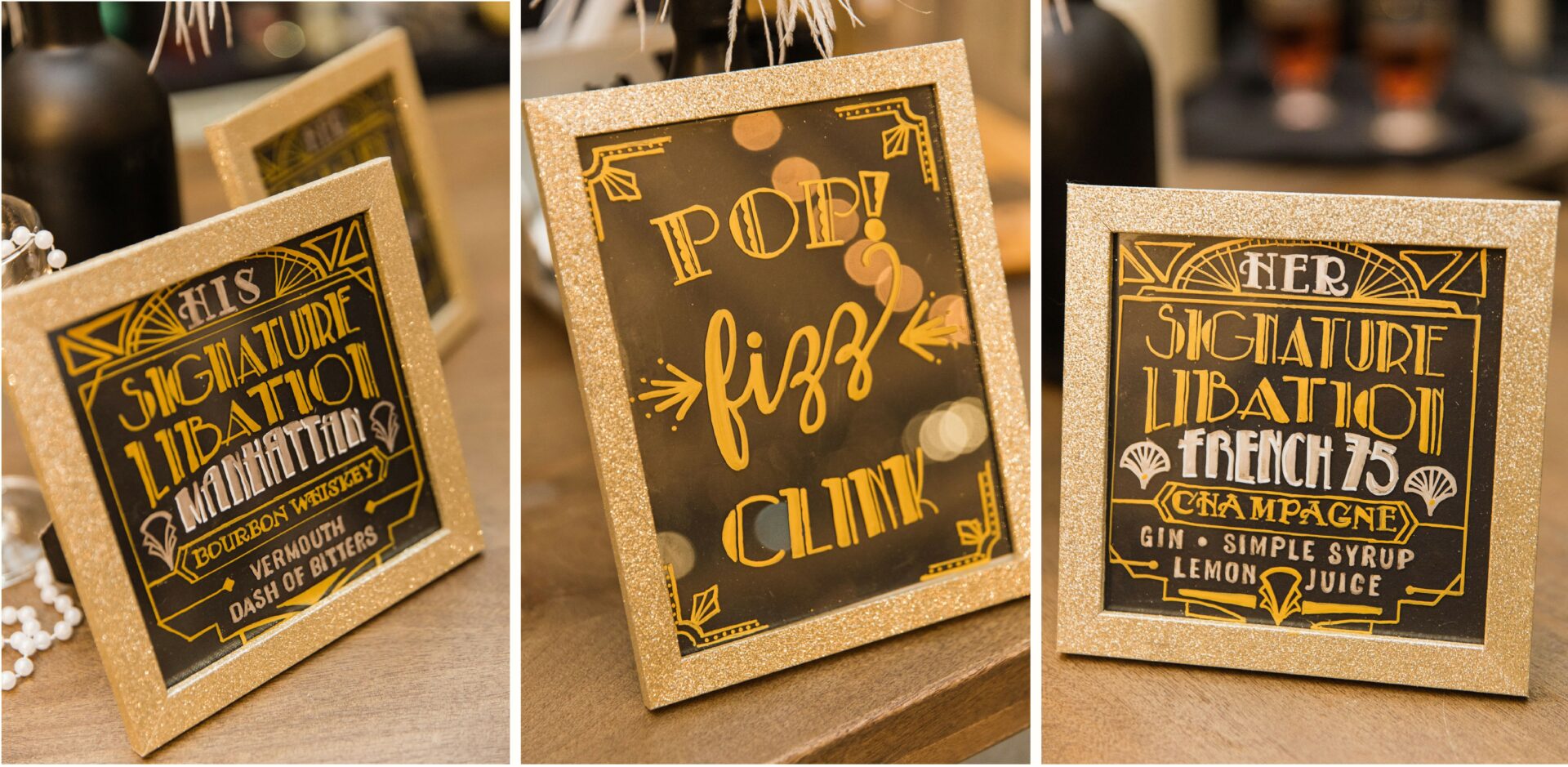
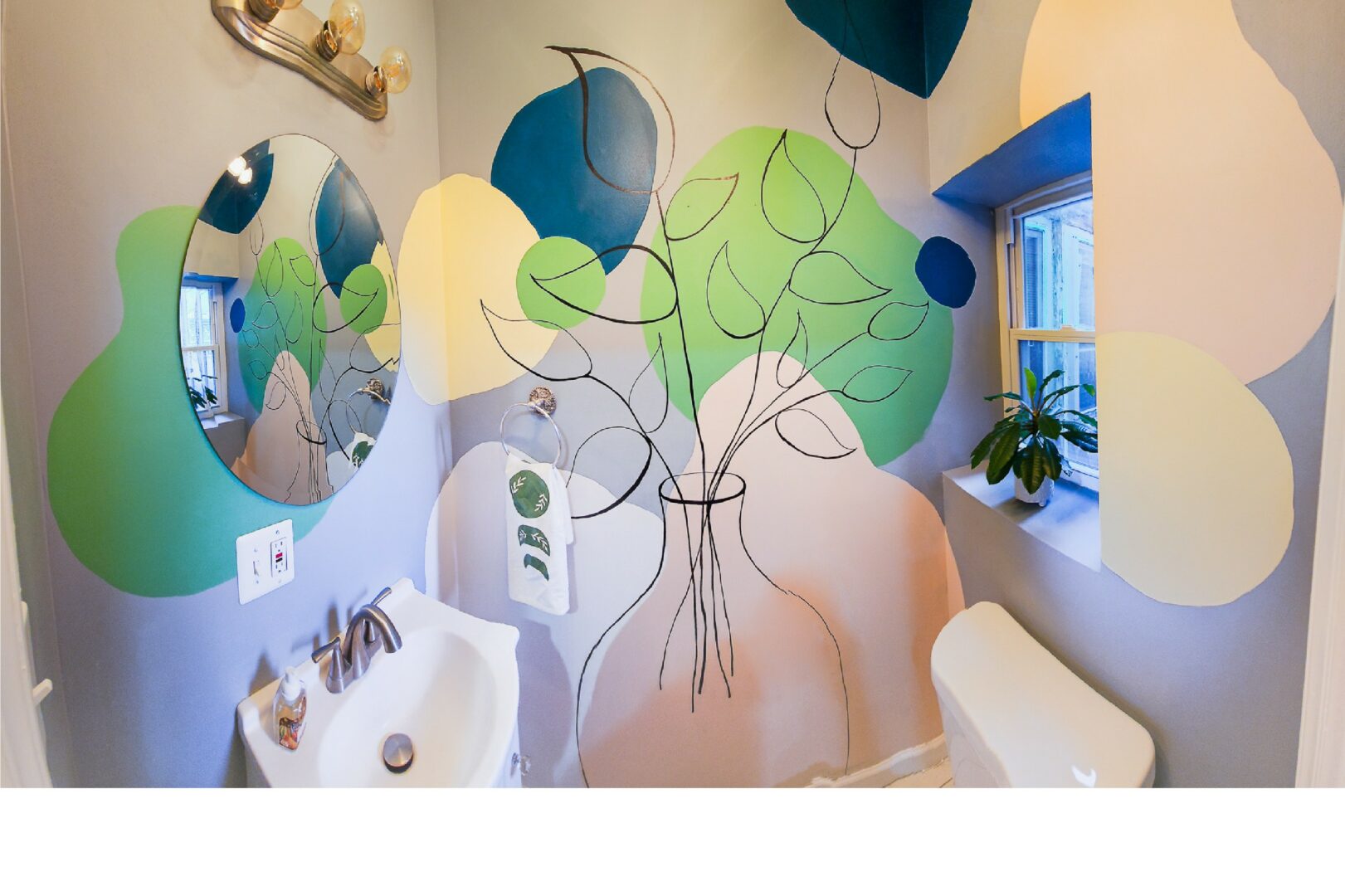
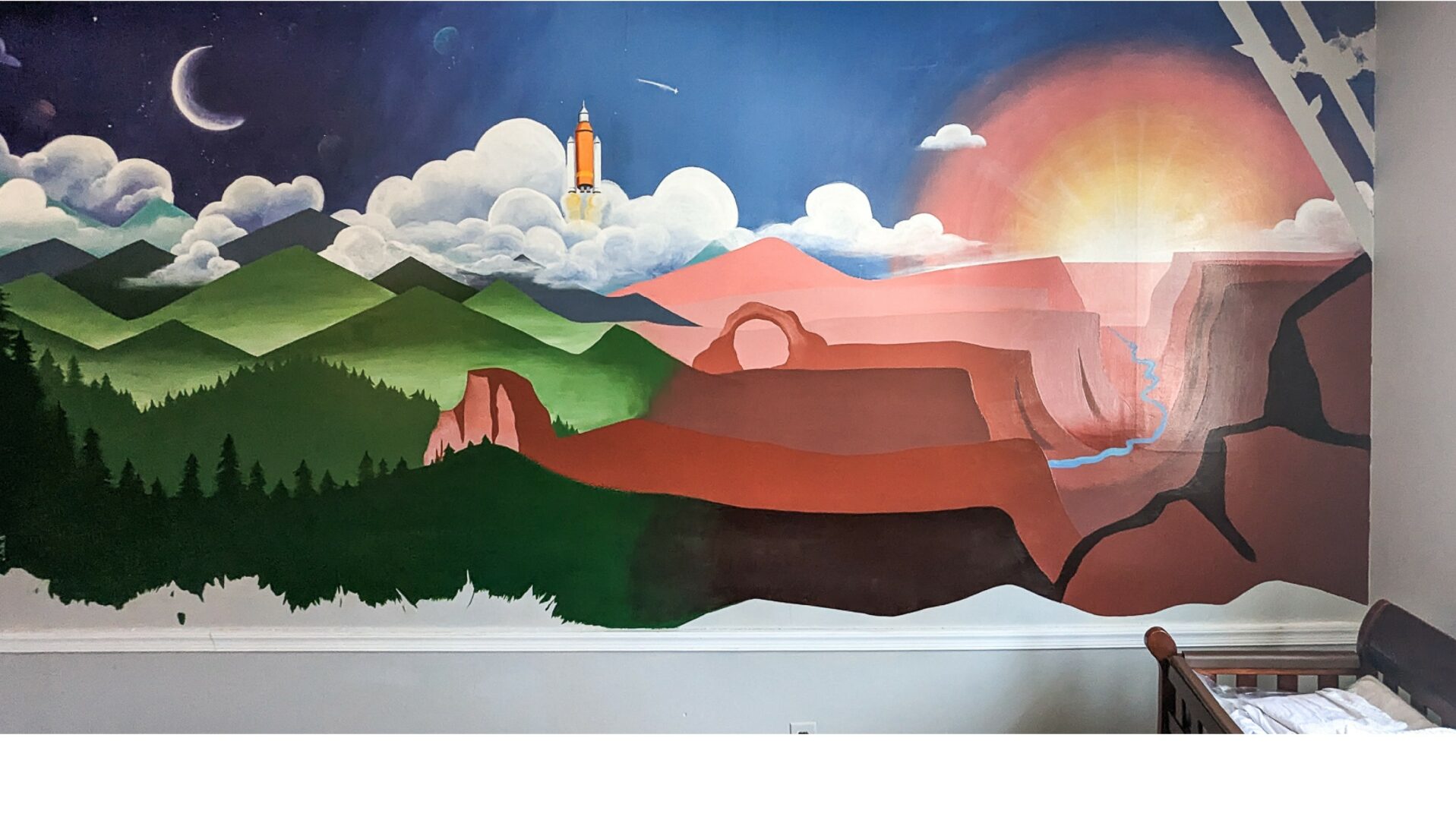
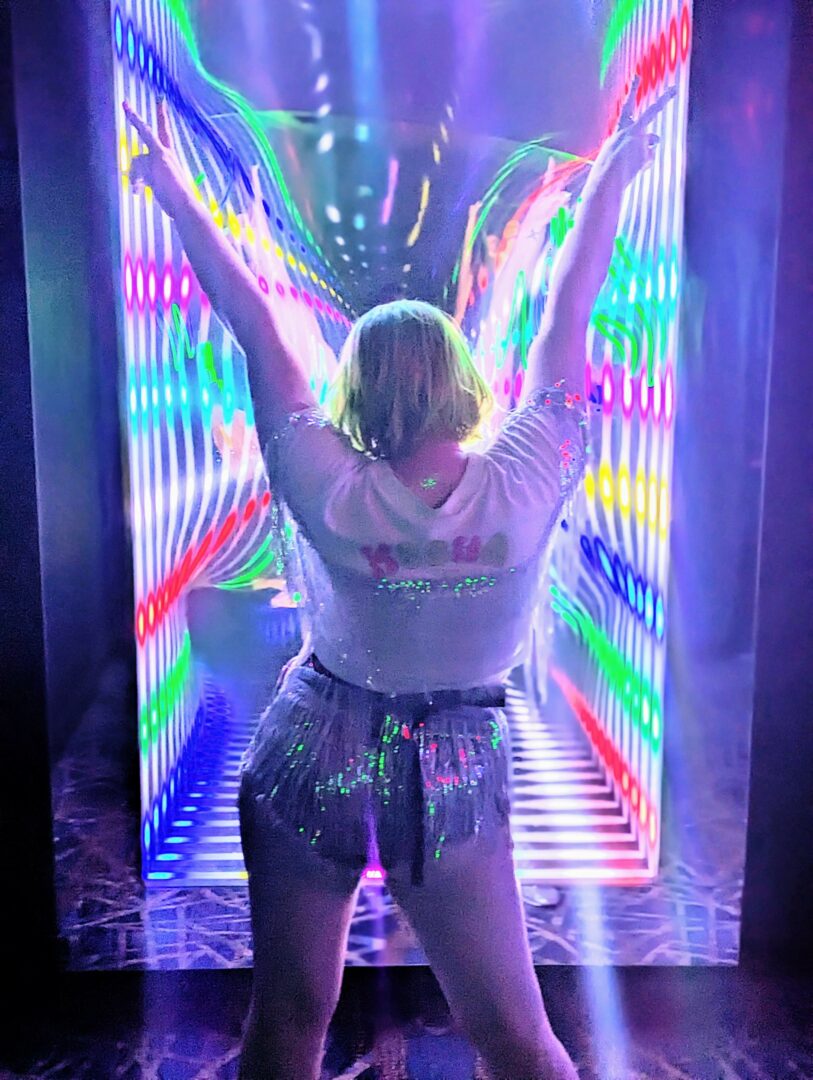
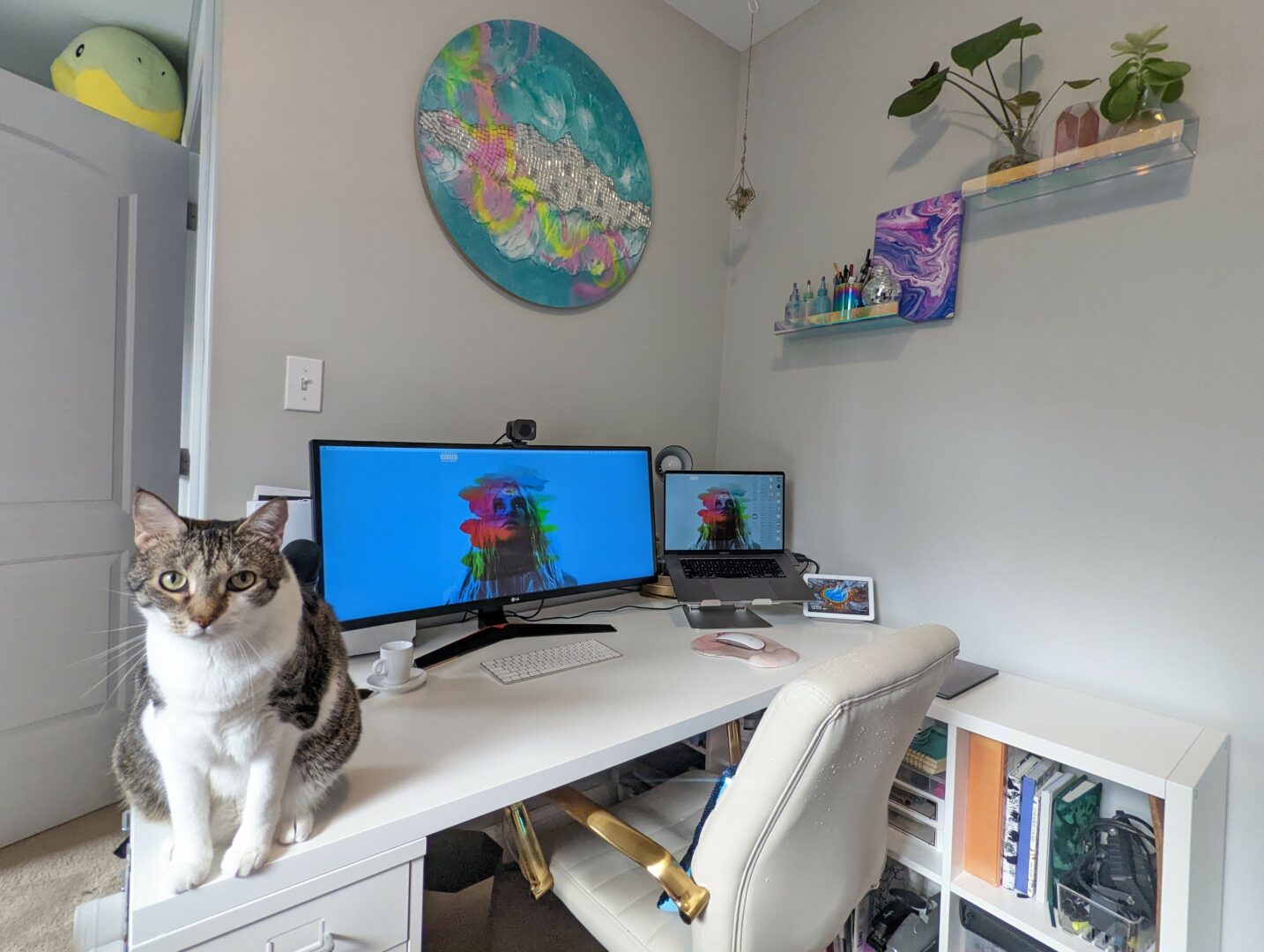
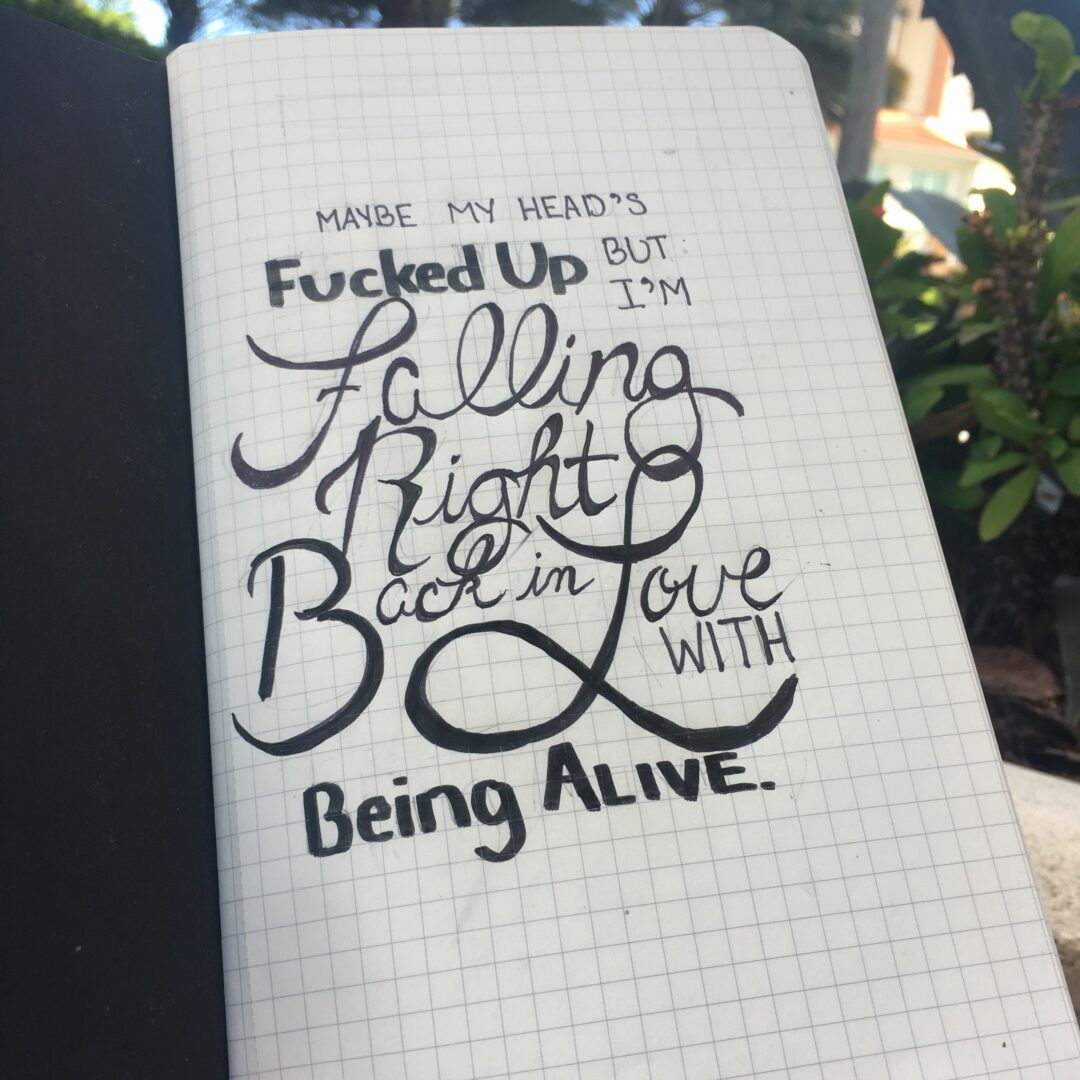
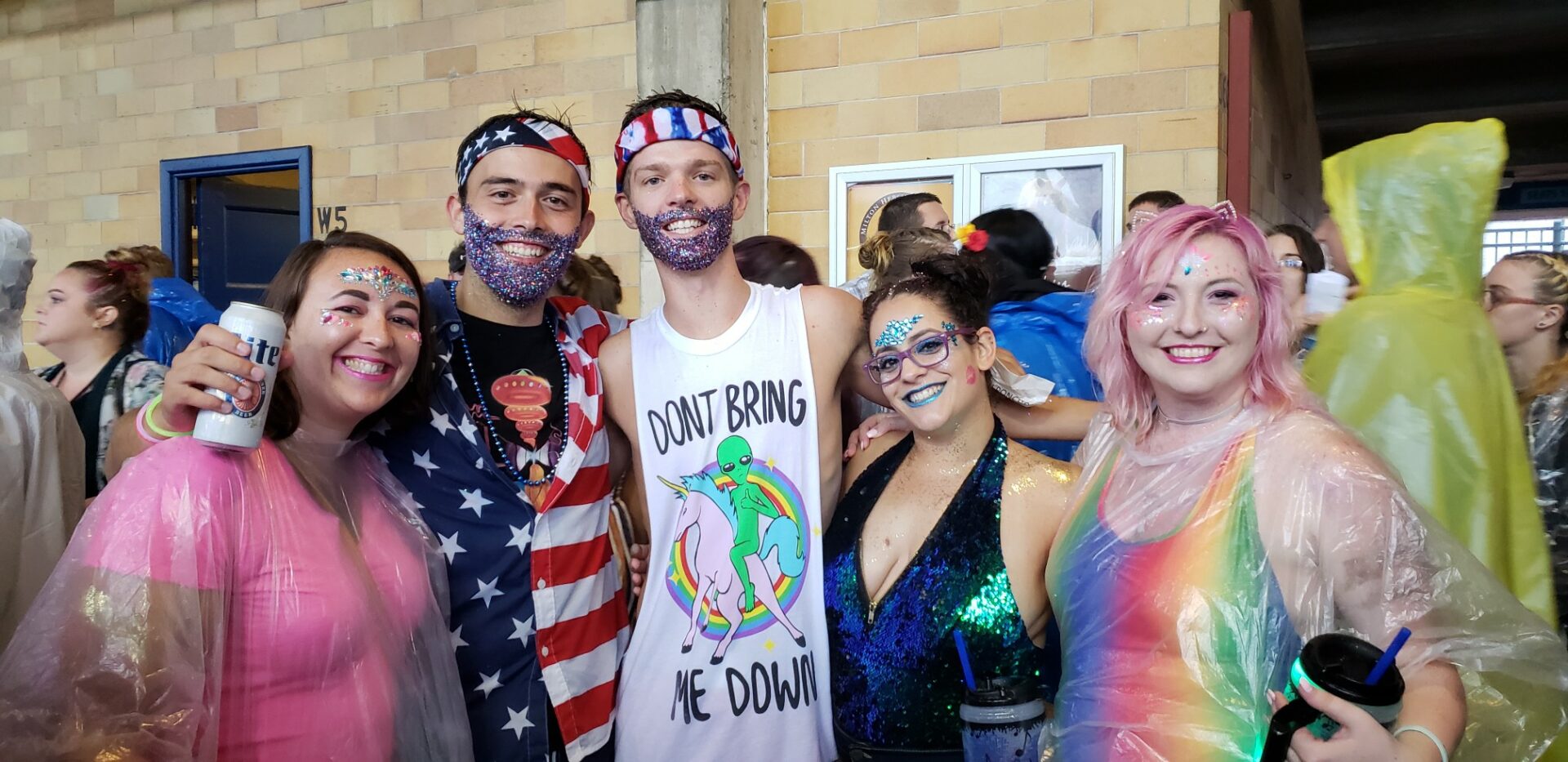
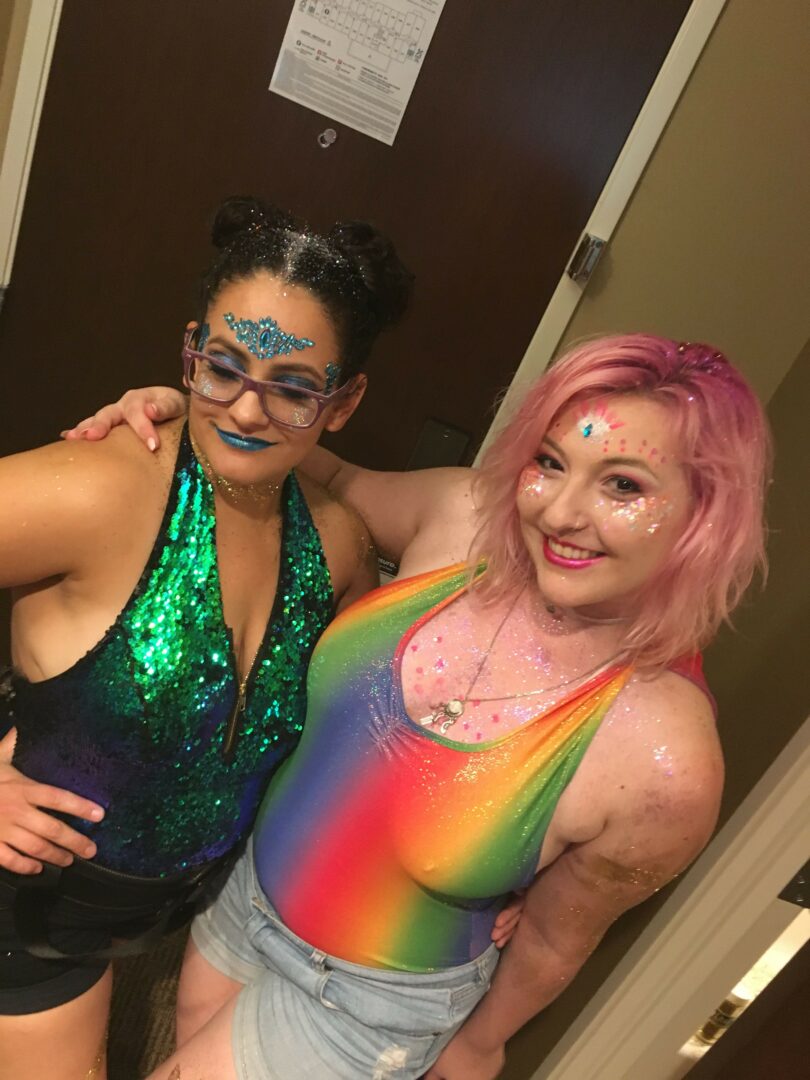
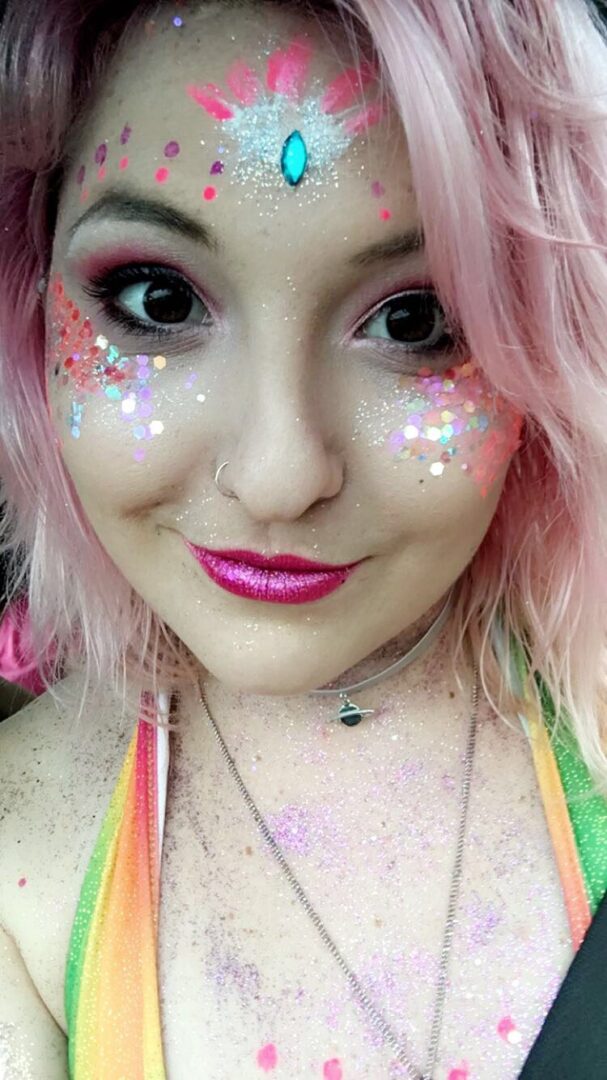
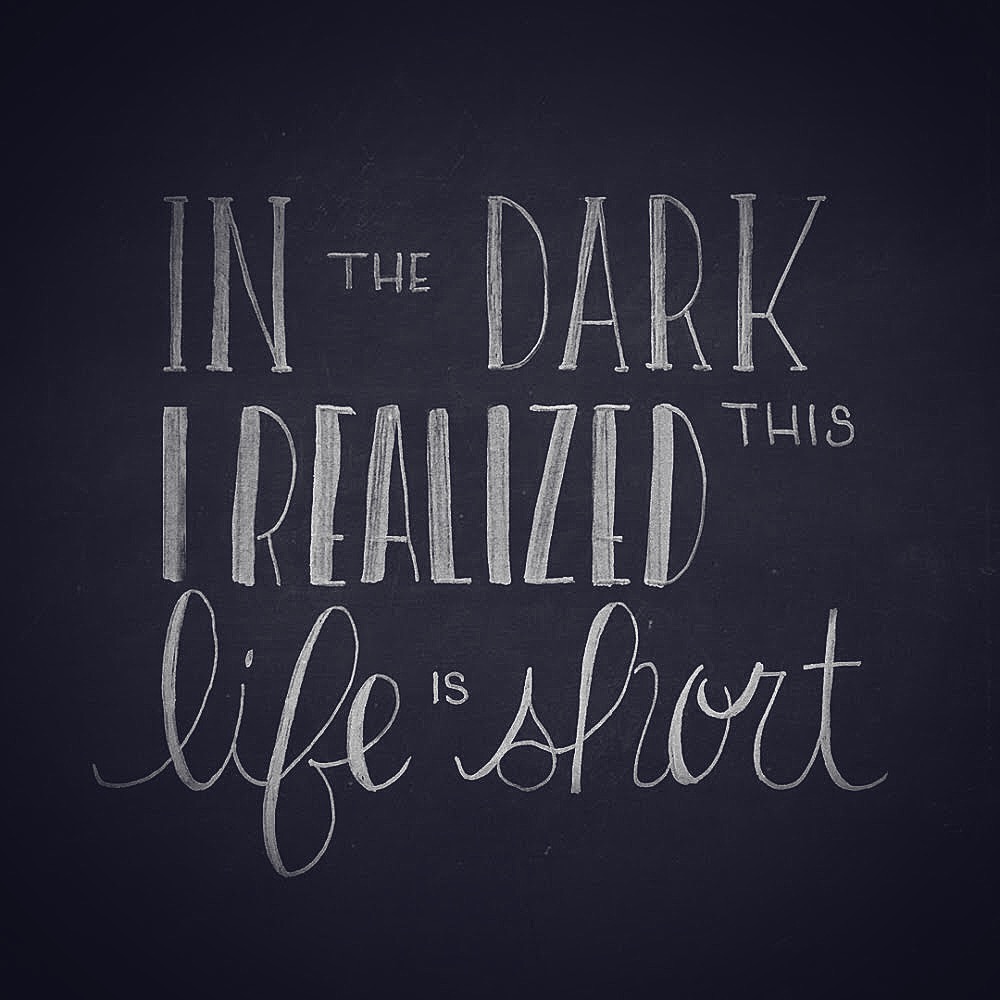
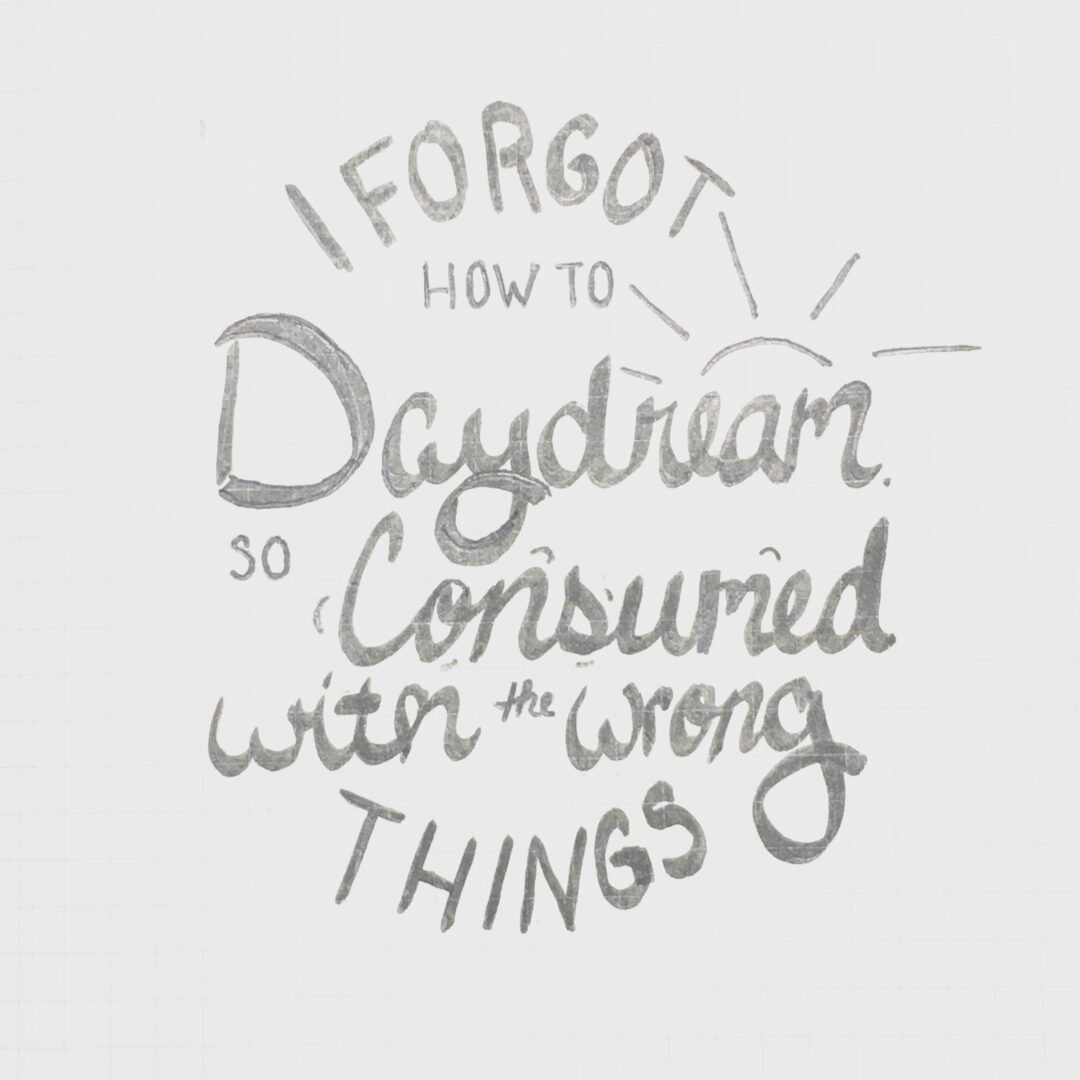
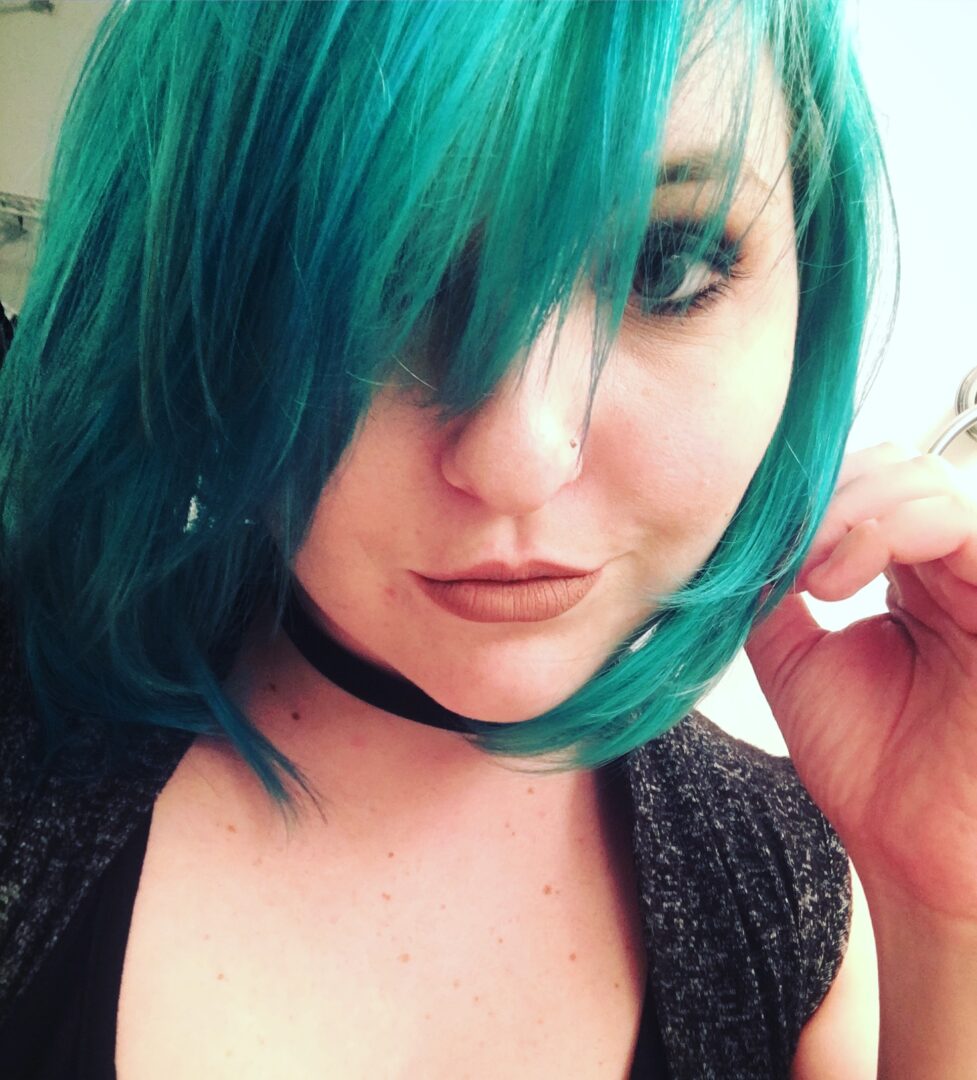
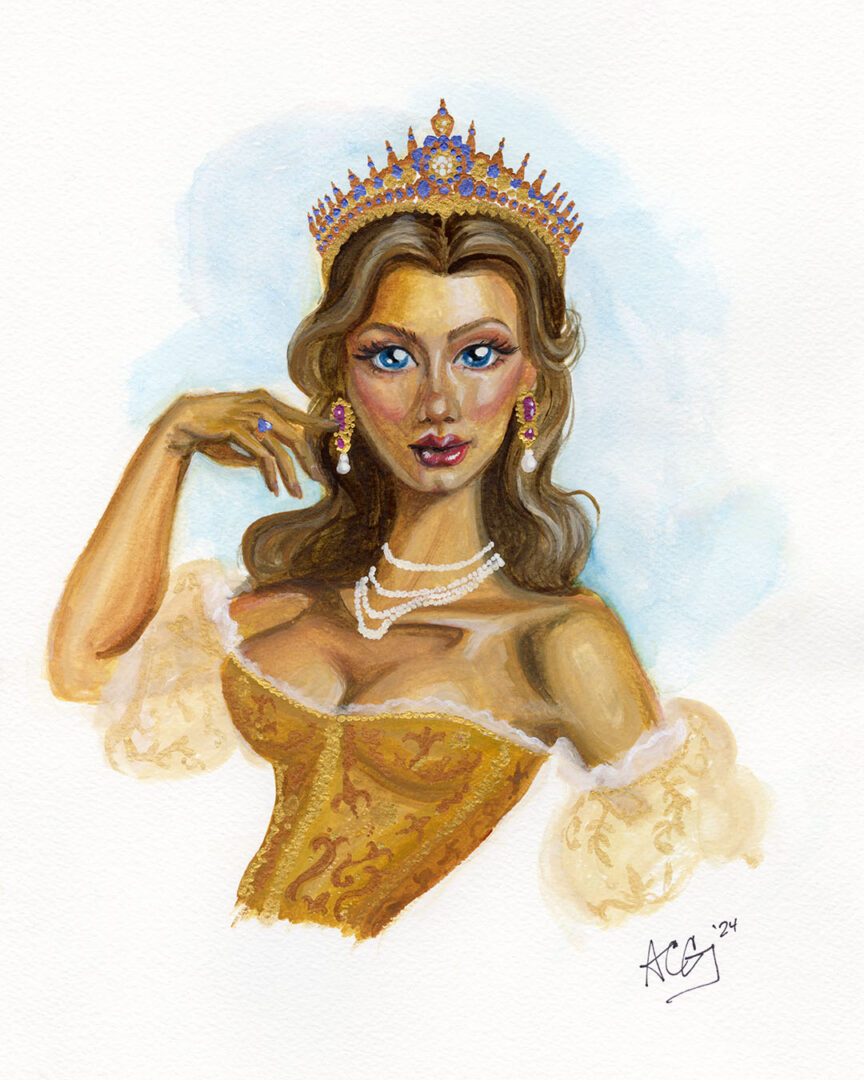
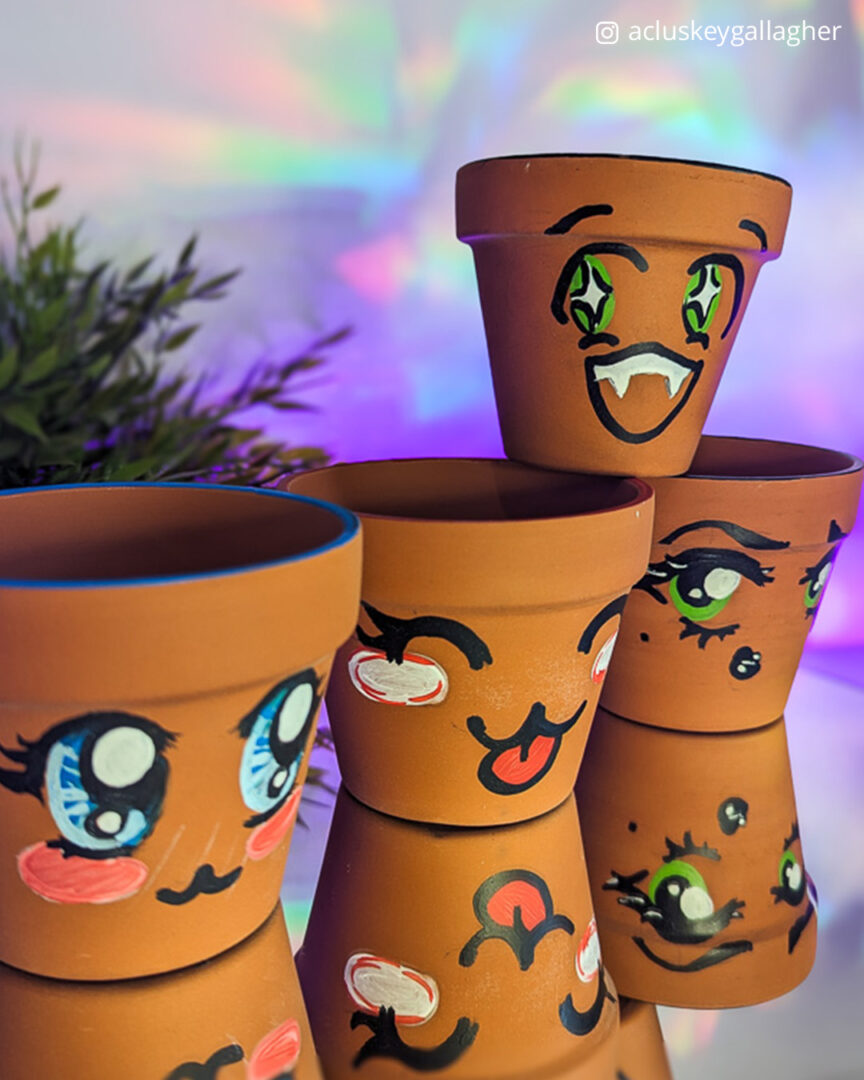
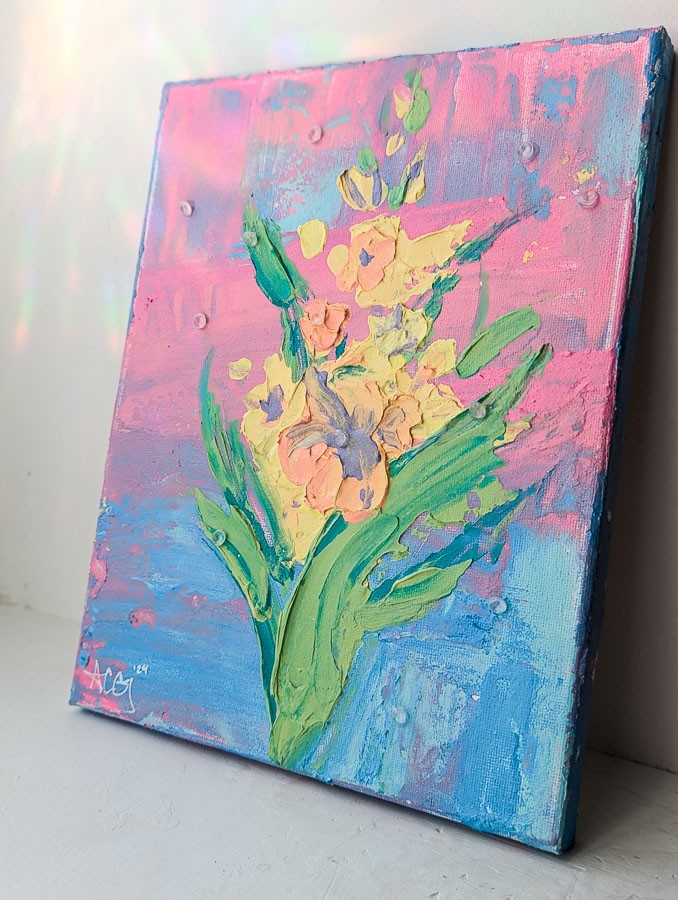
Image Credits
Headshot image of Ashley Cluskey-Gallagher by Henry López – https://www.instagram.com/henlo_
so if you or someone you know deserves recognition please let us know here.


